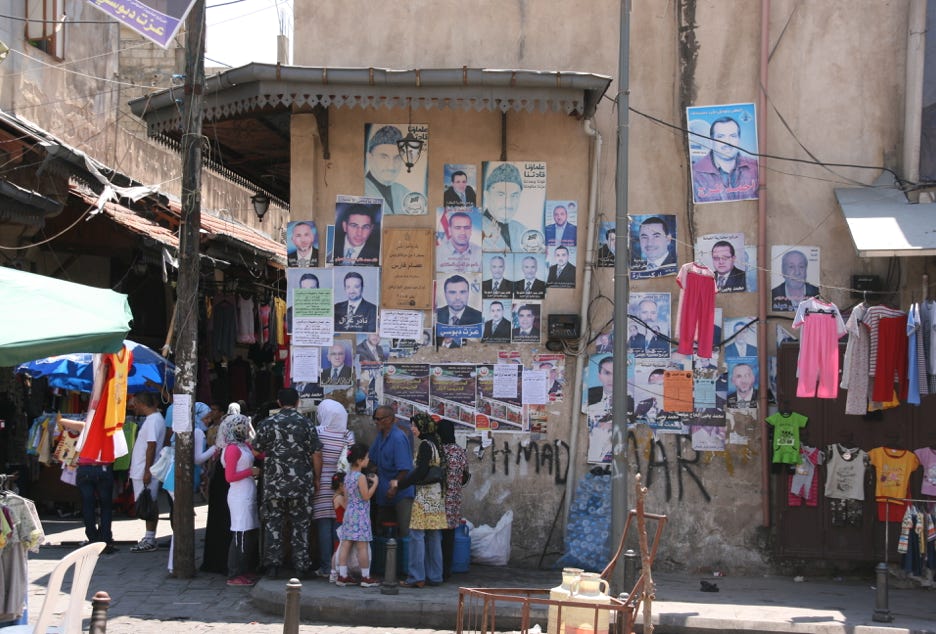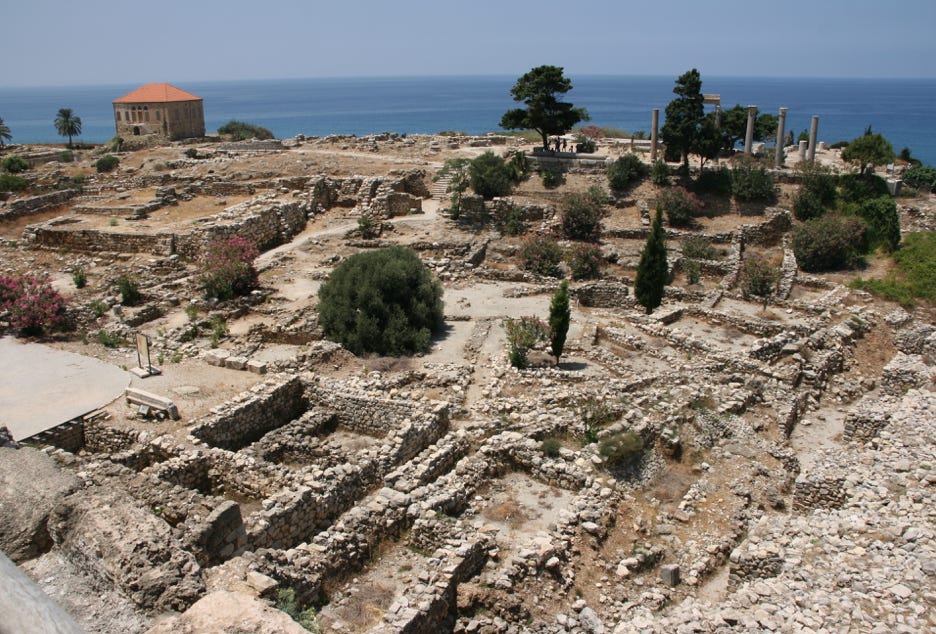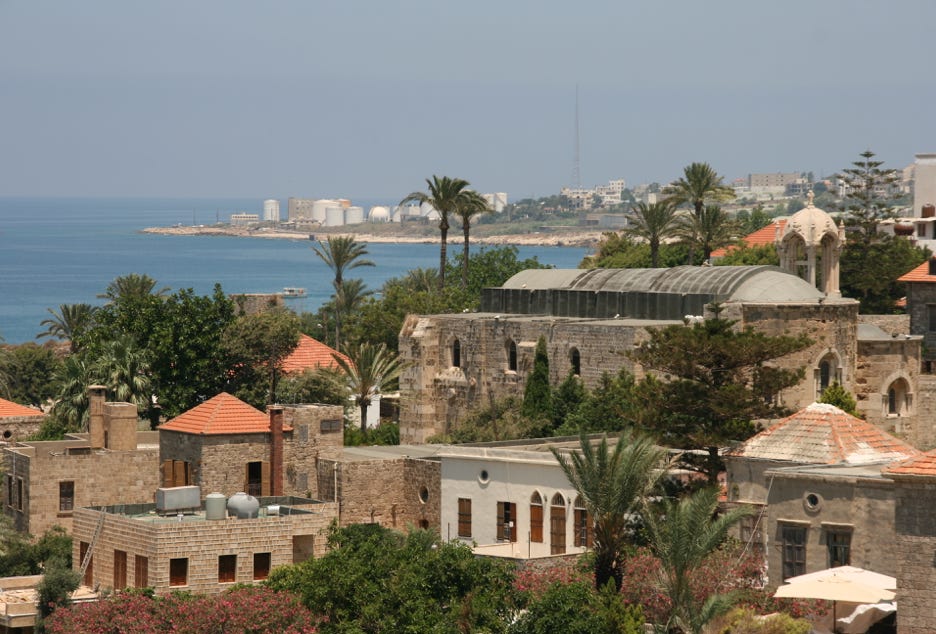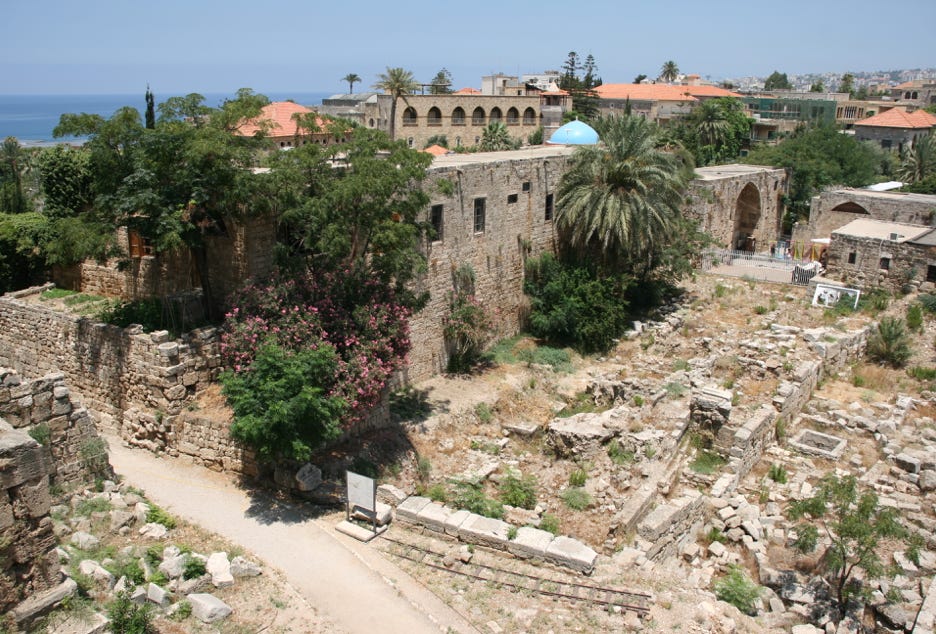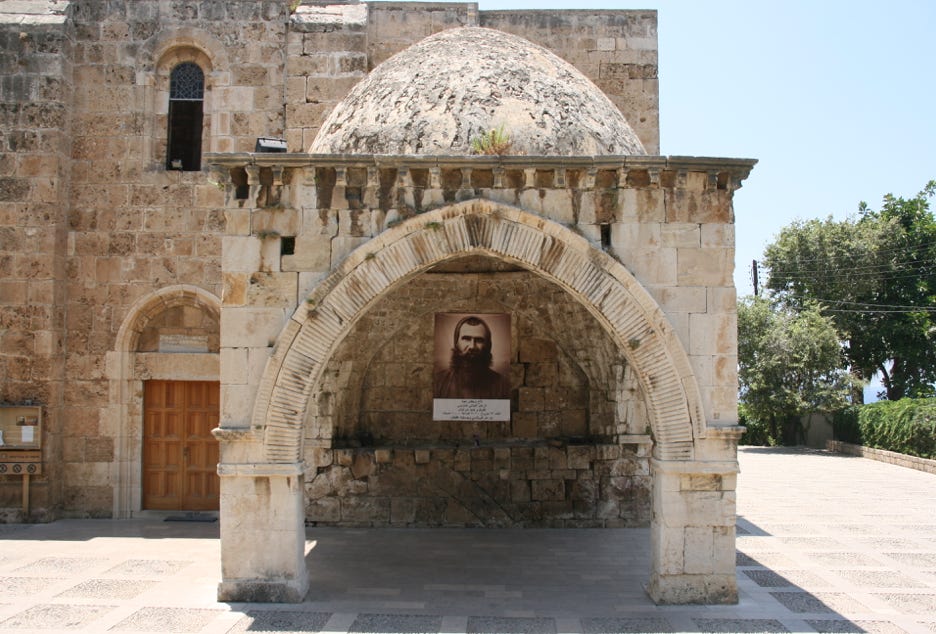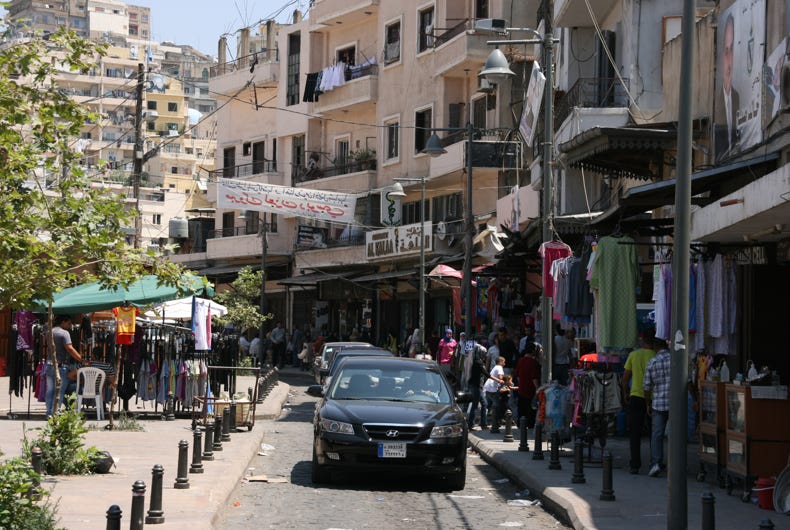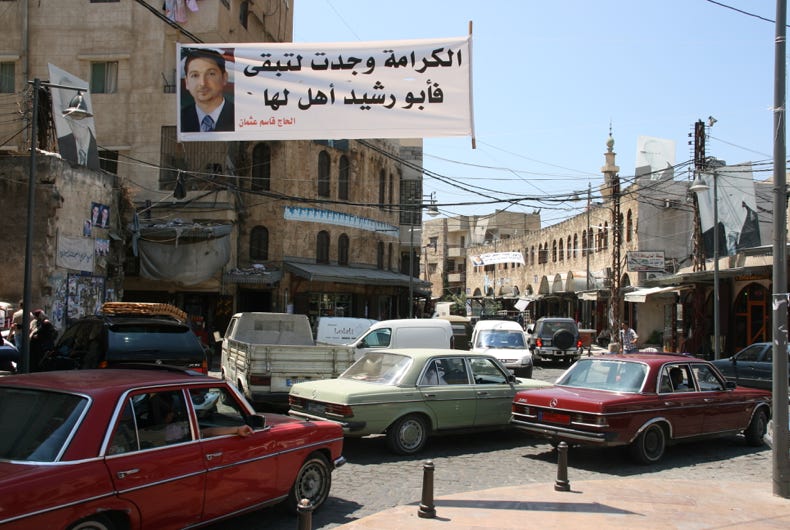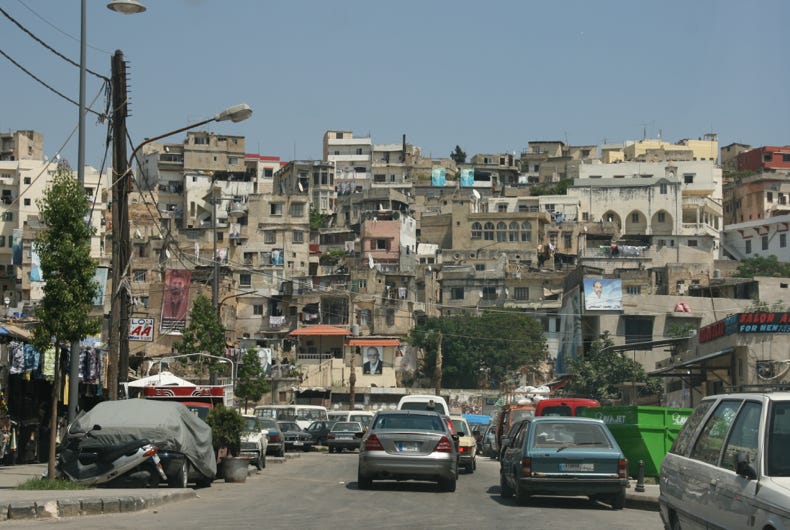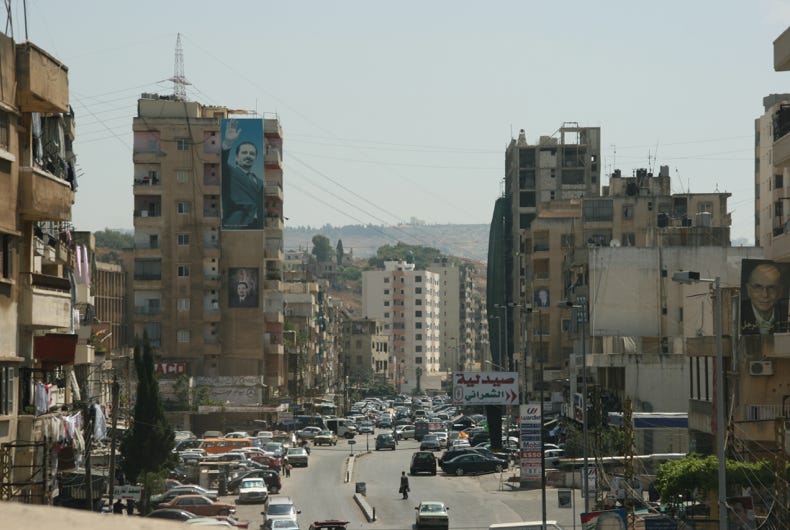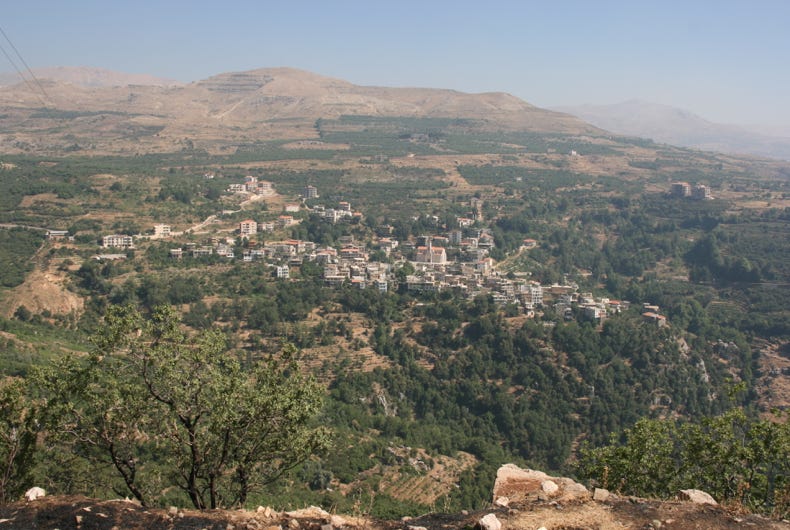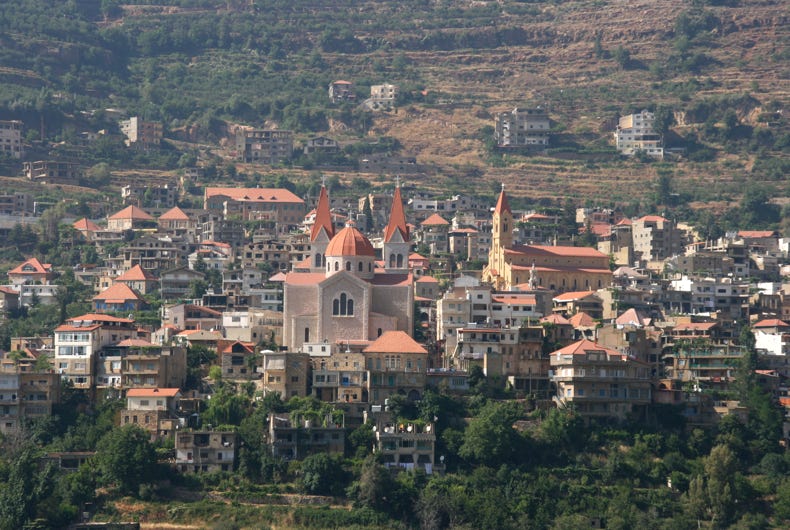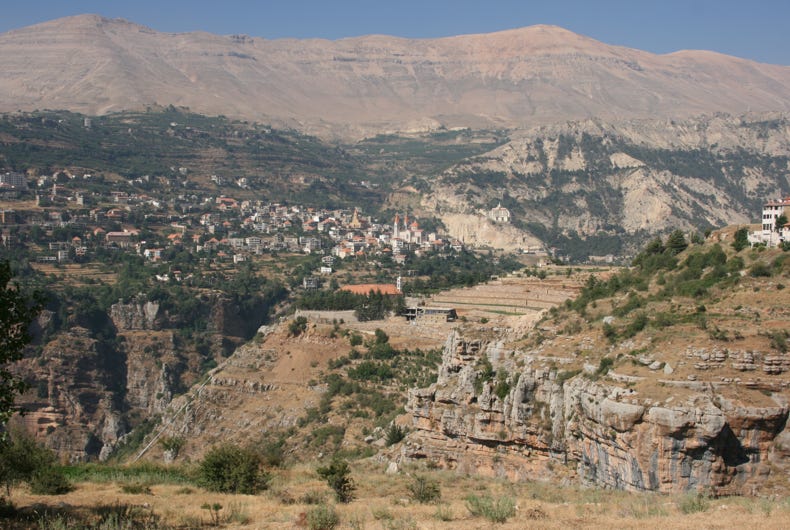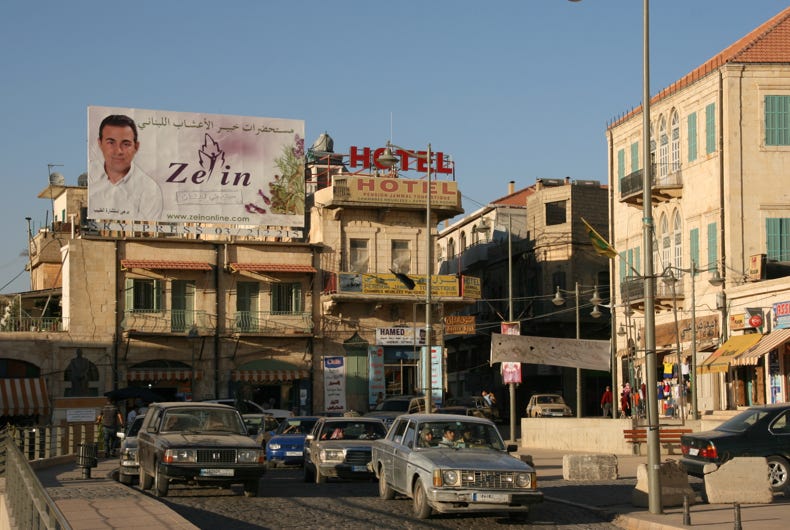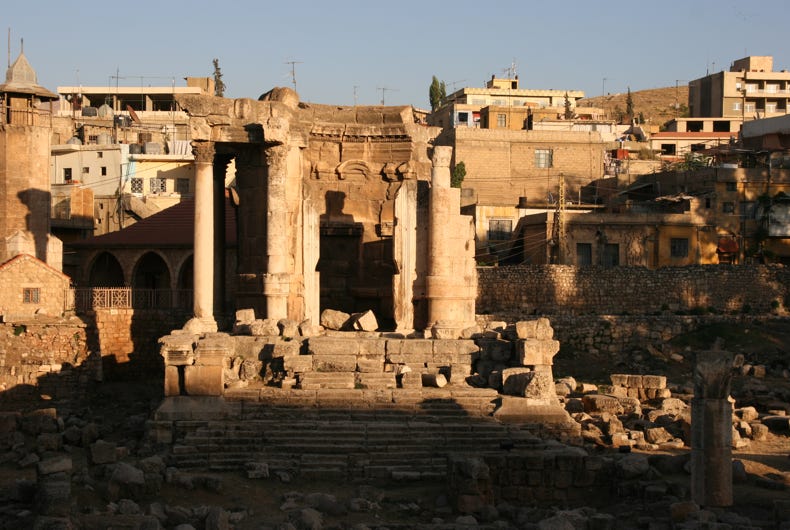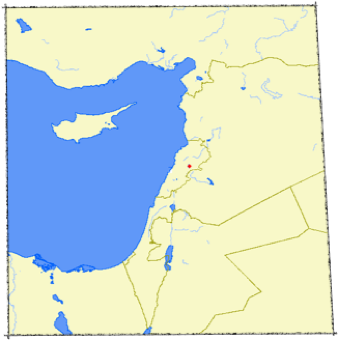
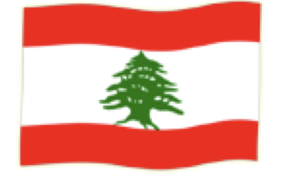

I had arranged to collect a rental car this morning at 9:30 am. This was to avoid the apparently widespread problem of waiting several hours for long distance minibuses that simply don’t turn up. (Almost) right on time, the agent appeared at our hotel with the car, as Peugeot 204 that I intended to use to complete a circuit of Lebanon over the next two days. Unfortunately the administrative procedures took almost an hour an a half to complete – checking passport and licence, filling in the agreement form, getting credit card pre-authorisation (after almost 50 failed attempts to get through by phone, and then having to try a second credit card), checking the car for damage, driving with the agent to the petrol station to top up the fuel tank, driving the agent back to his office – so it was almost 11 am before we began the drive out of Beirut.
Beirut may be investing huge amounts of money in its building infrastructure, but its roads are almost impossible to use. Our eight-lane highway (four lanes each way) was transformed into an unofficially 12-lane highway as cars jostled for positions in the snail-pace traffic.
Our first destination proceeding north from Beirut was Byblos, or as it is also known, Jbail. Byblos was a pretty coastal fishing port and beach resort with extensive ruins of a medieval town and a functioning, if small, old town centre, all centred around a 12th century Crusader castle. This was a very pleasant town that was reminiscent of towns along the coastline of Greece.
Our second stop was in many ways more interesting. After driving 85 kilometres north of Beirut and then penetrating almost an hour of gridlocked streets, we reached the centre of Tripoli, not the capital city of Libya but Lebanon’s second largest city with a population of about 240,000 people. Tripoli was a world away from modern, cosmopolitan, outward-looking Beirut. Plagued by street violence and bus bombings as recently as 2008, Tripoli was a markedly poorer and more traditional city than Beirut, and much more Middle Eastern in character compared with the European feel of Beirut.
After wandering the old town for about 40 minutes (the length of time purchased in the parking meter by my single 500 lira coin), we braved the gridlocked streets once again to head south-east across the Mount Lebanon Range. Our drive saw us climb well over 2000 metres through spectacular country, some of which is covered in snow in winter and, in one area (Les Cèdres) there were chalets and ski lifts. Much of the drive was through towns that were visibly Christian, as shown by the many churches, altars, monasteries, signs and pictures of saints beside the roads.
We arrived at our destination, Baalbek, at about 6:30 pm ... not that we knew this at first because there had not been a single sign pointing the way to Baalbek nor was there a sign announcing the town’s name on its outskirts – quite surprising as Baalbek is a fair sized town with a population of about 35,000 people. Creating even more of a problem, no streets were named, making it very difficult to find our hotel.
We asked directions on several occasions using my schoolboy French. Finally, one of those we asked was a shop keeper who was closing her shop for the day and insisted on getting in the car with us to show us the way to the hotel. I was really glad that she did so, as the hotel was up a hill in a small laneway and would have been exceedingly difficult to find otherwise.
Baalbek houses the headquarters of the Hezbollah, which is not, of course, why I chose to stay here (I came here for the ruins that I hope to explore tomorrow). Nonetheless, it might explain the huge presence of machine-gun wielding soldiers, tanks and barbed wire encampments on the outskirts of the city, and even on the main street in the centre of Baalbek itself. It also explains the bright yellow and green Hezbollah T-shirts that are on sale throughout the town – NOT a T-shirt to be worn in Israel, I suggest!
Having found and checked into our hotel, we took a short walk to preview the ruins that we will visit tomorrow morning, and then adjourned to a tiny café in the main street to have our dinner (toasted chicken wraps). The only other customers in the restaurant were five soldiers in camouflage gear who were also eating toasted wraps for dinner; I couldn’t work out whether our fellow clientele made Andrew and me more or less vulnerable to a bomb attack.

